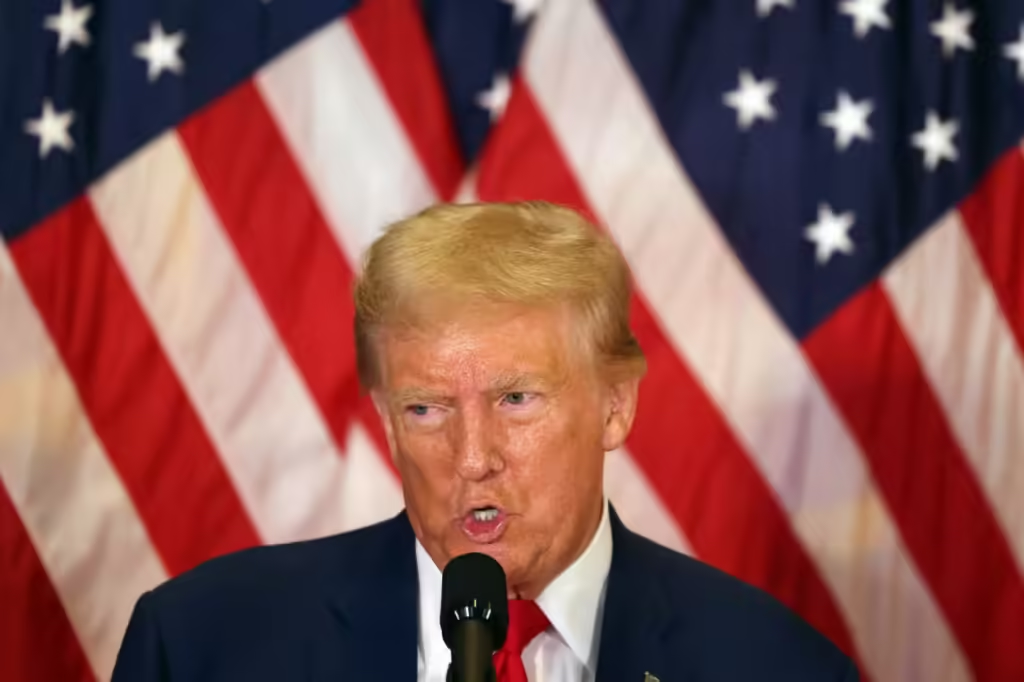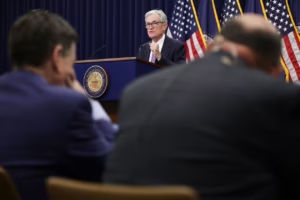In the past few weeks, Donald Trump and Kamala Harris have both been trying to win over voters with a range of economic policies that would help taxpayers get more money but could hurt the U.S. economy and government budget deficit.
Thursday, former President Trump added to the list of ideas by saying that the corporate tax rate should be lowered from 21% to 15% for “companies that make their products in America.” He also promised to pay for child care payments with money from new taxes on imported goods.
Head of economic policy at Veda Partners, Henrietta Treyz, says investors would do better to pay attention to what government leaders say and have done in the past to get ideas on how taxes will be handled in the future.
“Not the presidential election, but the U.S. Senate elections are the most important thing that will determine the fate of tax rates in 2026 and beyond,” she wrote in a note to clients on Thursday. “The U.S. Senate and House of Representatives write tax bills; the president just signs them.”
After 2025, the tax cuts and other benefits that were part of the bill that President Trump signed into law in 2017 will no longer apply to individuals. This will affect both Congress and the president, no matter who wins in November.
These tax cuts were meant to end so that Republicans could pass the law with a vote that was split down the middle. Bills that add to the budget imbalance outside of a 10-year window need 60 votes to pass the Senate, which means support from both parties.
According to Treyz, neither Trump nor Harris would be brave enough to veto a bill sent to them by Congress because failing to do so would mean higher taxes for most American families.
Adding up the costs of all the policies Trump pushed during his campaign shows how hard it will be for the former president to make them happen.
Trump has guaranteed to keep all of the tax cuts for individuals that were made in 2017. The Penn Wharton Budget Model says this would cost $3.4 trillion over 10 years. Among the other ideas are:
- Elminating taxes on Social Security benefits, which would cost $1.2 trillion.
- Extending business tax provisions, costing $623 billion.
- Eliminating taxes on tips, at a cost of upwards of $250 billion.
- Lowering the corporate tax rate to 15% — costing upwards of $595 billion, depending on implementation of domestic-production rules.
Penn Wharton thinks that the tax cuts will make the economy grow, which will lower the cost of these measures.
Still, these plans could cost more than $4.4 trillion, which Treyz says Senate Republicans will not agree with.
She thinks that if Trump wins the election, he will have small numbers in both the Senate and the House to work with. However, she says that these members will be more focused on their own political futures than on the president’s policy goals.
“The biggest problem is that this bill will make the deficit bigger, which the party will have to vote for,” Treyz wrote. “Republicans have lost re-election bids in the past when they voted to raise the deficit too much.”
The 2017 tax bill was paid for in large part by limiting the amount of state and local taxes that people can subtract from their federal tax bill. This makes things even more difficult for Republicans.
That part of the law saves a lot of money and only affects wealthy taxpayers. But if Republicans keep the House of Representatives, they will need the votes of 18 GOP representatives from high-tax districts “who will have a hard time voting to maintain the $10,000 cap when the alternative is a reversion to the unlimited 2017 levels,” Treyz wrote, saying that if the law is extended, the cap will have to be raised to about $40,000. This will cost a lot of money.
She said that Republican leaders in the Senate are only willing to agree to $2.5 trillion in new deficit spending. This leaves just enough room to extend the tax cuts from 2017 for another five years.
“To put it simply,” Treyz wrote, “Republicans don’t have the votes to do what Trump promised on the campaign trail, let alone get rid of taxes on tips or Social Security benefits.”





